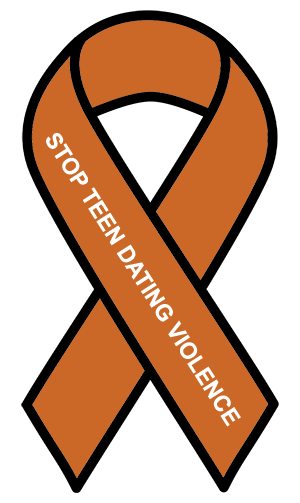Teen Dating Violence
February is Teen Dating Violence Awareness Month
 Please take time this month to learn about Teen Dating Violence and participate in
the activities available.
Please take time this month to learn about Teen Dating Violence and participate in
the activities available.
Take the Quiz - Is Your Relationship Healthy?
DVAM Awareness on Social Media
- @loveisrespect on Twitter
- @loveisrespctofficial on Instagram
- @loveisrespectpage on Facebook
- 2/27/2022: @loveisrespectofficial Instagram Live - Talk about Gender Stereotypes
- 2/28/2022: @loveisrespectofficial Instragram Live - Don't Stop Talking
About Teen Dating Violence
Dating Violence and Domestic Violence (also known as Intimate Partner Violence or Relationship Violence) occurs when there is abuse in a relationship. It's not just physical abuse. It also includes other abusive and controlling behaviors used by one partner to maintain power and control over the other partner, such as:
- Emotional and verbal abuse - insulting and calling a partner names, constantly criticizing, isolating a partner from family and friends, monitoring a partner's activities, humiliating a partner, threatening a partner, damaging a partner's belongings, blaming a partner for the abusive behavior, or gaslighting a partner by pretending not to understand, questioning facts, and denying statements or actions.
- Financial abuse - using money to control a partner.
- Sexual abuse - forcing a partner to engage in non-consensual sexual activity.
- Digital abuse - using technology and the internet to bully, harass, stalk, intimidate, or control a partner.
Abuse can occur at any stage of a relationship.
People of all ages, races, genders, sexuality, religion, education level, or income level can be victims or perpetrators of abuse.
- 1 in 11 female and 1 in 14 male high school students report having experienced physical violence in the last year.
- 1 in 8 female and 1 in 26 male high school students report having experienced sexual dating violence in the last year.
- 26% of women and 15% of men who were victims of contact sexual violence, physical violence, and/or stalking by an intimate partner in their lifetime first experienced these or other forms of violence by that partner before age 18.
Source: Centers for Disease Control
- 43% of LGBT youth and 29% of heterosexual youth reported being victims of physical dating violence.
- 59% of LGBT youth and 46% of heterosexual youth reported emotional abuse from a dating partner.
- 37% of LGBT youth and 26% of heterosexual youth reported cyber/phone abuse and harassment.
- 23% of LGBT and 12% of heterosexual youth have reported sexual coercion.
Source: Teen Dating Violence - Urban Institute Study Summary
Anyone can be an abuser.
Warning Signs
- Physical harm in any form - pushing, hitting, kicking, pinching, biting, etc.
- Extreme jealousy or insecurity
- Explosive outbursts, anger, or mood swings
- Isolating you from your friends or your family - physically, financially, or emotionally
- Putting you down frequently or humiliating you, especially in front of other people
- Checking your phone, email or social media without your permission
Source: love is respect
National Resources
- National Domestic Violence Hotline (English and Español)
- National Sexual Assault Hotline (English and Español)
- Love is Respect (English and Español)
